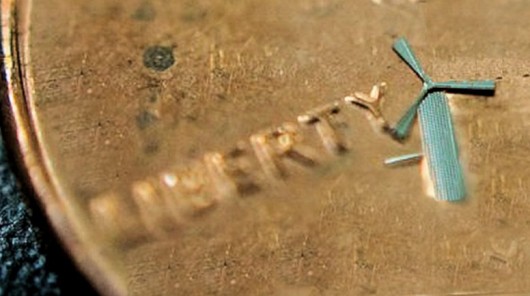 Everyone’s
been there. You’re in the middle of an important call and all of a sudden your
cellphone urgently chimes in your ear, alerting you that its battery is about to
kick the bucket. Although battery life has long been the bane of mobile
existence, a new microelectromechanical systems (MEMS) technology could solve
the ever-present problem of recharging your mobile device.
Everyone’s
been there. You’re in the middle of an important call and all of a sudden your
cellphone urgently chimes in your ear, alerting you that its battery is about to
kick the bucket. Although battery life has long been the bane of mobile
existence, a new microelectromechanical systems (MEMS) technology could solve
the ever-present problem of recharging your mobile device.
Measuring in at only 1.8 mm at its widest point, the key to possibly endless energy is a micro-scale windmill so small a single grain of rice could support ten of the tiny devices. Created by research associate Smitha Rao and professor J.-C. Chiao, the Lilliputian windmill was designed by blending origami folding with conventional semi-conductor layout technique. By uniting the two processes, the University of Texas at Arlington (UTA) team was able to create complex, self-assembling, 3-dimensional mechanical structures from 2-dimensional metal plates.
Constructed using a nickel-alloy, Rao and Chiao’s windmill has eschewed the main problem facing MEMS machines—their fragility. After successful structural tests of their micro-windmills last September, the UTA team is confident that their choice of material will make their devices strong enough to handle any industry use.
This post was made using the Auto Blogging Software from WebMagnates.org This line will not appear when posts are made after activating the software to full version.
View the Original article


